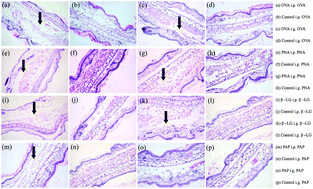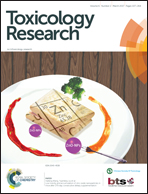Development of a BALB/c mouse model for food allergy: comparison of allergy-related responses to peanut agglutinin, β-lactoglobulin and potato acid phosphatase
Abstract
The purpose of this study was to develop a BALB/c mouse model for comprehensively assessing food allergies. Serum specific IgE and IgG1 antibodies against protein (PNA, β-LG, and PAP) were induced in intraperitoneally sensitized BALB/c mice. On day 28, blood was collected to obtain the serum, and the splenocytes were cultured. On day 30, mice were challenged with antigen by intraperitoneal injection or intragastric administration, and the physiological and immunological responses to the antigen were studied. A general finding was that allergenicity-related parameters in the mice treated with PNA were statistically higher than those in the mice treated with PAP (P < 0.05 for IL-4; P < 0.05 for specific IgE; P < 0.001 for specific IgG1), whereas parameters in those treated with β-LG were between the other two. Statistically higher histamine release was observed in PNA and β-LG-sensitized mice than in control mice challenged with the same protein by i.p. injection. Intraperitoneal challenge with PNA and β-LG in sensitized mice induced edema in the ear and inflammatory cell infiltration in the lung, which were not observed with the control mice. The results show a new model that covers many features of clinical food allergies that are not seen in other models. The order of potential allergenicity might be PNA > β-LG > PAP, and the intraperitoneal challenge could be more sensitive to induced systemic food allergy.



 Please wait while we load your content...
Please wait while we load your content...